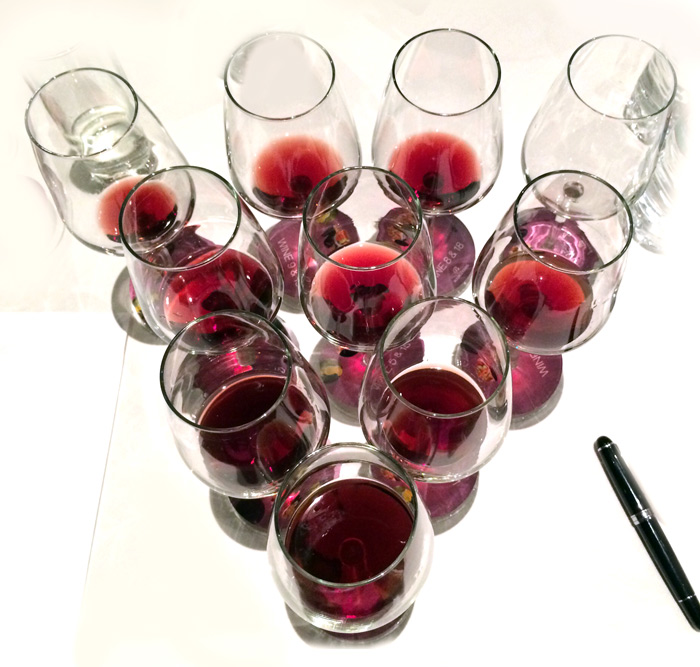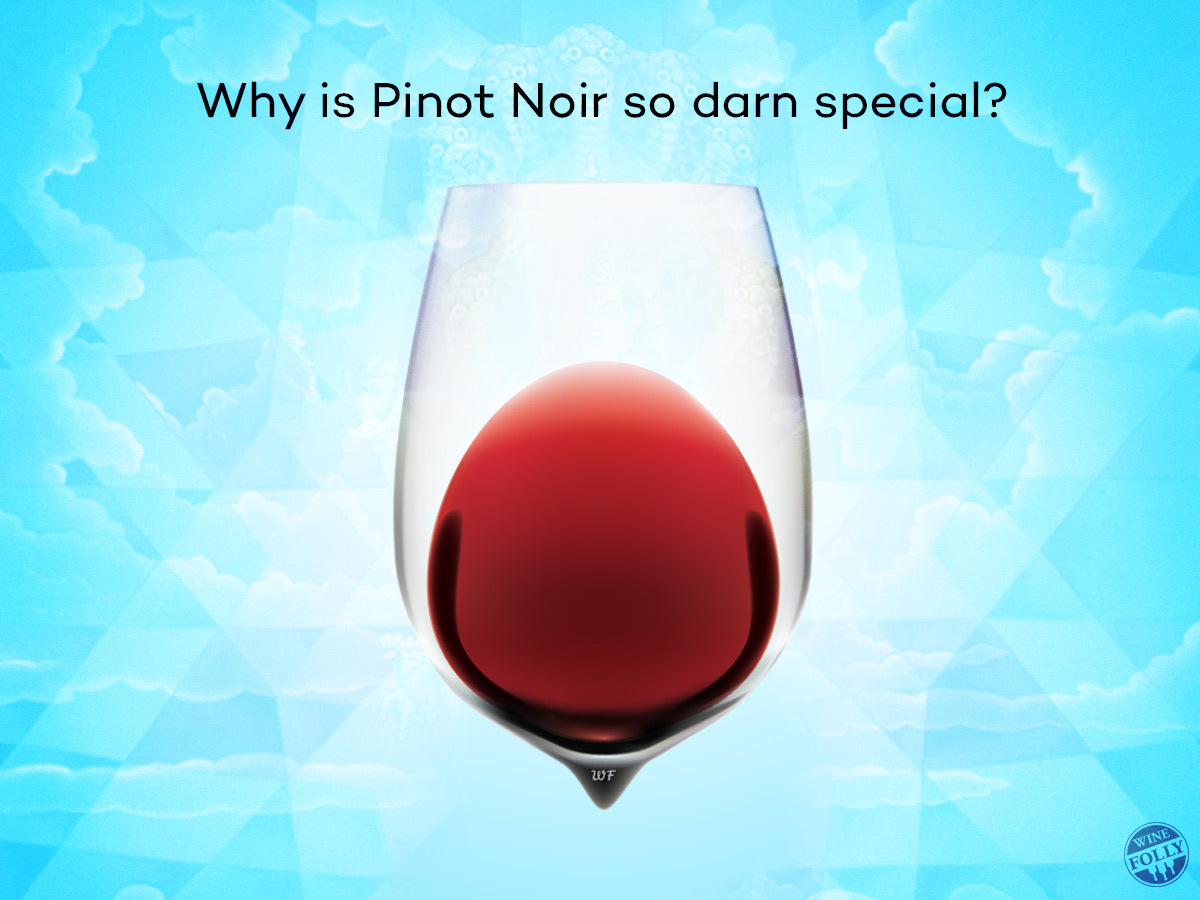Pinot Noir is the 10th most planted grape variety in the world. Wines made with Pinot Noir have cultivated a massive following of hardcore wine enthusiasts.
Average prices for Pinot Noir tend to be higher than other grapes. So what is it about this grape that is so darn special to enthusiasts? Let’s look at 5 facts about Pinot Noir.
Learn More: The flavors, grapes, and food pairing for Pinot Noir.
5 Facts on Pinot Noir that You Should See
Pinot Noir is over 1000 years older than Cabernet Sauvignon
Pinot Noir ranks with some of the oldest grapes in the world. Grapes that have been around since the Roman times also include Muscat Blanc — the Moscato grape, Timorasso, a rare white grape with only 50 acres around Piedmont Italy, and nearly extinct Gouais Blanc, which supposedly was ‘the grape’ of the middle ages in Europe.
Pinot Noir = Pinot Grigio = Pinot Blanc
Wine writers Jancis Robinson, Julia Harding, and José Vouillamoz of the book Wine Grapes claim that Pinot Gris/Grigio and Pinot Blanc are simply color mutations of Pinot Noir. Each grape DNA was analyzed only to find out they are identical. So, if you like Pinot Noir, start drinking all the Pinots!
Germany is a top Pinot Noir Producer
Germany is the 3rd largest producer of Pinot Noir after France and the US. Pinot Noir is commonly called Spätburgunder in Germany. The wines from the Baden (in the Kaiserstuhl district), Pfalz (‘faults’), and the Nahe (‘nah-ha’) are all worth finding and drinking.
Where there’s Pinot Noir, there’s Chardonnay
Chardonnay is related to Pinot Noir. It’s a natural crossing of Pinot Noir and Gouais Blanc (the near-extinct variety mentioned above!).
This is why Chardonnay and Pinot Noir always seem to grow together (such as in Oregon, Burgundy, and Chile). While I’m rambling on this topic, the same relationship is true between Sauvignon Blanc and Cabernet Sauvignon, which is why regions like Bordeaux and Napa both grow Cabernet and Sauvignon Blanc. Aha!

Pinot Noir has tannin!
Pinot Noir has a natural ability to be lighter than other red wines and have low tannin. However, a recent tasting of Grand Cru Burgundy showed that Pinot Noir could have a hell of a lot more tannin. How do winemakers do this?
Well, besides reducing yields in the vineyards to make concentrated grapes, many wine producers use a technique called ‘Whole Cluster Fermentation’. Whole cluster fermentation is when the entire grape bunch, including the stems, goes into the crusher and fermenter.
This technique is rare in wine varieties other than Pinot. The stems add tannin (which you can taste on the front of your mouth as a drying and astringent sensation).
The tannin adds a longer runway of life for the wines to age. Collectors of high-end wines seek out this technique when cellaring a wine for a minimum of 10 years before drinking.
What Glass for Pinot Noir?

‘Miss Belle’ is the last of the Pinot glasses we bought for $6 at World Market. I broke the others.
If you’re serious about Pinot Noir, you might start looking for a ‘proper’ Pinot Noir Glass. There are no rules to what exactly to buy, but here’s what makes a great Pinot Noir glass:
- A large round bell-shaped glass This is important to collect the delicate aromas of Pinot Noir. You can use a whiskey snifter or a fishbowl if you’re in a bind.
- A stem This isn’t required, but it helps if you’re addicted to swirling wine.
You might want to check out the Wine Glass Decoder for more information on selecting wine glasses.
Learn More About Pinot Noir
What are the next steps with Pinot Noir? Learn about the taste and best food pairings: Amazing Pinot Noir Wine Facts.

